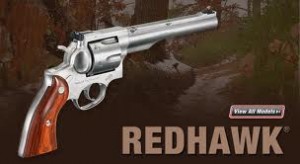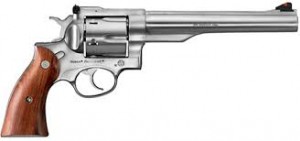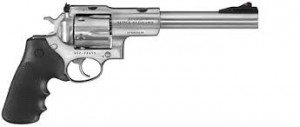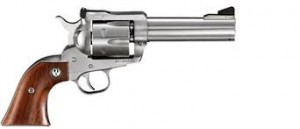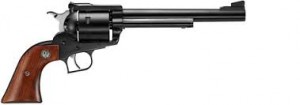I say one method because there are many methods used in sighting in procedures. I see this topic debated constantly in forums and it can be a very heated discussion. What I am posing is a very simple method to get you up and running quickly.
Of course we start with everything correctly installed. You can use this method for pistol, revolver, rifle or whatever. I start with a target at 10 yards. I know it is very close but it gives you an easy place to start . I will generally lay my firearm across my shooting bag or sand bag if you have one, for stability and support. It is hard to get sighted in if you are not steady.
I use a small 2″ diameter black dot, on a 2′ x 2′ piece of cardboard. I generally draw the dot on the cardboard with a sharpie. If you have a target that is the grid style, 1″ or 1/2″ square blocks, all the better. Fire one shot, if you are in the center of the dot you can read the next paragraph. If not here is what I do. Lets say I am 1/2″ left and 1″ low. Because we are close it will take quite a few clicks to see movement in shot placement. In this case, from experience I would move the windage (left and right adjustment) 4 clicks right. Because the elevation (up and down adjustment) was twice as far off as the windage I would move the elevation 8 clicks up. Aiming at the same point you initially shot at fire another round. If you need to move it more or less by all means move it again. You can tell by the point of impact movement if you have gone in the correct direction. This is a little trial and error, just take your time and observe your results. OK for our example that did the trick and you have a center hit. Move your target to 20 yards and repeat. I keep doubling the distance until I reach my desired sighting in distance.
Here is the confusing thing about scope adjustment clicks and point of impact movement. A lot of scopes and dot sight have the following system of clicks, not all but many do.
At 100 yards 1 click moves the point of impact 1/4″. So if we fired a shot and it was 1/4″ left one click to the right would center the shot. Here is where the confusion comes in. If we now fire the same gun at 50 yards 1 click now represents 1/8″ of point of impact movement instead of the 1/4″ we got at 100 yards. The following is a visual of this concept.
Line 2 targets up, each center in line with the other, one target is at 100 yards the other is at 50 yards. We fire a shot through both targets. If the target at 50 yards has a hole 1/2″ to the left then the target at 100 yards is going to have a hole 1″ to the left. You need to look at it like an angle. Not to confuse things but that is 1 MOA or Minute of Angle. A 1″ deviation of impact at 100 yards is 1 MOA. So when we move the point of impact at 100 yards 1″ it is only moving 1/2″ at 50. Dang I hope that is clear, HA HA!
You need to keep this in mind as you are progressing farther out using my method of sighting in. Each click will represent more movement as you move farther out.
Final distance for sighting in. This will vary for everyone. If you shoot only at 50 yards then zero your gun in at 50 yards. If you shoot at 100 yards then zero your gun for 100 yards, it is really that simple. If you know your zero at a fixed distance, you know your ammunition’s velocity, you can calculate your point of impact at varying distances very easily using ballistic tables. We will save that for another post.
If this is unclear please feel free to drop me a line. I may need to clean this up to make it more understandable for everyone. It seems easy to me but I have been doing it for a long time and I may be omitting some very important points. Feel free to let me know.

